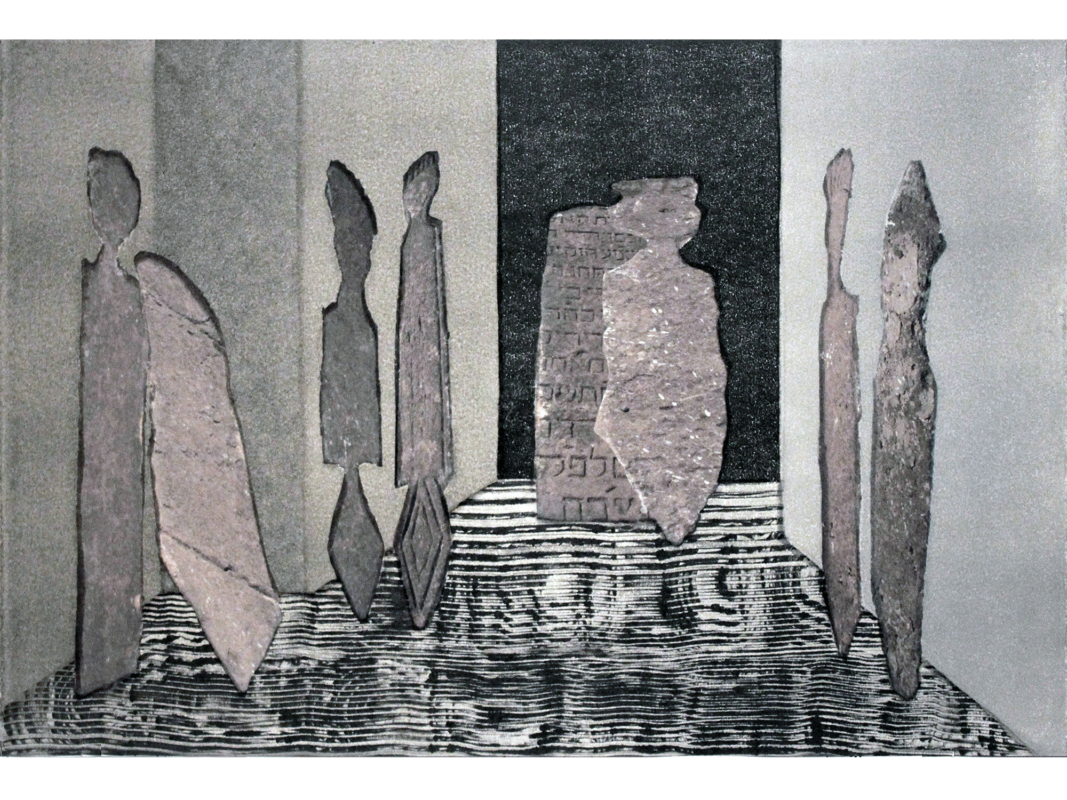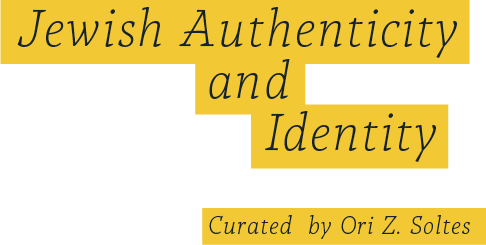
“Essaouira III,” Miriam Stern, 2019, unframed monoprint on paper, 15″ x 22″
Of course, the United States is not the only important location for Jews across the geography and history of the Diaspora. Certainly Morocco has a very long Jewish history—a very long history of Jewish-Muslim interface, that for fourteen centuries has affected everything from the symbols in art to the gastronomy of both communities. The monoprint, “Essaouira III,” is one of several such works by Miriam Stern, from Teaneck, NJ, that focus on that small coastal town located beyond the Mediterranean Sea and where Morocco faces the Atlantic Ocean. It is a town particularly known for its Sufi (Muslim mystical) community and for its dye production, in which Jews were a dominant presence—and thus Essaouira has had a particularly extended Jewish communal history.
Stern was there not too long ago, and visited the Jewish cemetery in Essaouira, with graves going back as far as 1776 (a time when the King of Morocco was among the first foreign leaders to recognize and establish diplomatic relations with the nascent United States). Sculpted of marine sandstone, these markers have clearly suggestive human forms, and occasionally still bear their Hebrew inscriptions The artist photographed these stones and transformed them into a series of digital images and monoprints that—by disconnecting the tombstones from their actual physical setting, turning some of them sideways and at diagonal angles, and by creating a kind of “floor” that suggests both rippling water or sand and highly grained wood, as well as receding diagonal walls and a dark back wall—creates a rather ghostly array. It is as if these are not stones but spirits that hover on the border between the world of the past and contemporary reality.
Miriam Stern is a painter, printmaker, and installation artist. She has exhibited in the United States, Europe, and Israel, and has won numerous awards and prizes. Ms. Stern usually works in series of prints and paintings on a specific theme. Her art has been reproduced in magazines and books of poetry. In addition to producing art, she has curated several art exhibitions and lectures about the relationship of art as Midrash. Learn more about Miriam on her website www.miriamstern.net.

